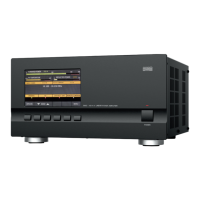
Do you have a question about the Acom 500S and is the answer not in the manual?
This manual explains Installation, Operation and Maintenance of the ACOM 500S linear power amplifier.
Details on ACOM 500S amplifier serial production start and manual validity period.
Guidance for technically qualified users on reading the manual and safety precautions.
Lists related ACOM documentation for further information, available for download.
Contact information for ACOM support and guidance for seeking assistance.
Explains the importance of the ID label/plate and its data (model, serial number).
Lists the items included in the ACOM 500S amplifier package.
Highlights key features of the ACOM 500S amplifier, such as easy operation, high-resolution display, etc.
Defines safety terms (DANGER, WARNING, CAUTION, NOTICE) and electrical safety requirements.
Important safety warnings and precautions regarding electrical shock, hazards, and operation.
Instructions for safely unpacking the amplifier and inspecting for physical damage.
Information on the amplifier's automatic switching power supply and its voltage range.
Guidance on choosing a suitable location for the amplifier, considering ventilation and access.
General instructions for connecting the amplifier to station equipment and grounding.
How to connect external devices using the CAT/AUX interface and necessary settings.
Explanation of the amplifier's initial power-on state and the standby mode activation.
Description of the amplifier's front panel components: POWER button, LED, functional buttons, and display.
Step-by-step guide to turning on the amplifier for the first time and its boot sequence.
Details of information areas displayed on the amplifier's basic operational screen.
Explanation of the OPR/STB and BAND buttons for manual amplifier control.
Procedure for testing the RF bypass path of a non-driven amplifier after installation.
Measures to improve EMC and reduce interference within the radio station setup.
Explanation of STANDBY and OPERATE modes and how to switch between them.
How the amplifier handles band changes automatically or manually.
Instructions on how to change antennas, with or without an ACOM tuner.
Information on using ACOM 04AT and 06AT external antenna tuners with the amplifier.
Overview of the amplifier's control unit monitoring signals and protection levels.
Allows monitoring of 11 amplifier parameters, with values displayed on the basic screen.
Used for checking and adjusting idle drain current and testing amplifier functions by a technician.
Configuration of transceiver settings for CAT/AUX interface connection, including interface type and baud rate.
Configuration of user-specific settings like automatic menu exit, auto-operate, and display brightness.
Displays information about the last 28 HARD FAULT protection trips, downloadable via RS-232.
Options to reset user preferences, working hours, error logs, or all settings to factory defaults.
Information on remote control via ACOM eBox, noting it's in development.
Details on controlling the amplifier remotely using the RS-232 port.
Guidelines for regular checks of connections, contacts, and cables to ensure reliable operation.
Instructions for cleaning the amplifier's outer surfaces and ventilation apertures safely.
Procedure for replacing primary mains fuses, including voltage and current ratings.
How to download and use fault codes via RS-232 for diagnosing amplifier issues.
Information on available firmware versions and where to download new firmware.
Lists technical specifications including frequency coverage, output power, and impedance.
Lists the various functions of the ACOM 500S, including receive/transmit control and protections.
Information on European conformity (CE mark) and US FCC regulations.
Guidelines for complying with RF exposure limits set by the FCC.
Environmental conditions for storage and details on shipping size and weight.
Instructions for packing and shipping the amplifier for diagnostics or repair.
Guidelines for proper disposal and recycling of the product according to local regulations.